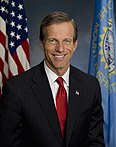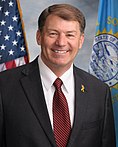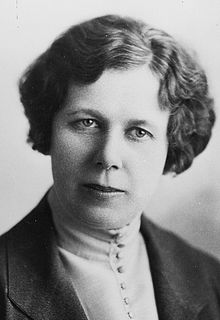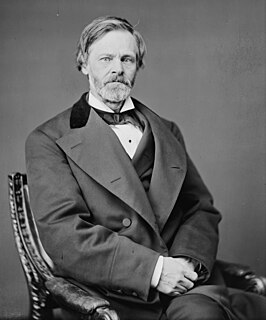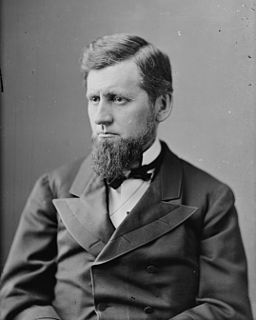Class 2 Class 2 U.S. Senators belong to the electoral cycle that has recently been contested in 1996, 2002, 2008, and 2014. The next election will be in 2020. | C
o
n
g
r
e
s
s | Class 3 Class 3 U.S. Senators belong to the electoral cycle that has recently been contested in 1998, 2004, 2010, and 2016. The next election will be in 2022. |
|---|
| # | Senator | Party | Years in office | Electoral history | T
e
r
m | T
e
r
m | Electoral history | Years in office | Party | Senator | # |
|---|
| 1 | 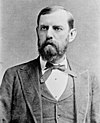
Richard Pettigrew | Republican | November 2, 1889 –
March 3, 1901 | Elected in 1889. | 1 | 51st | 1 | Elected in 1889.
Lost re-election. | November 2, 1889 –
March 3, 1891 | Republican | 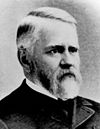
Gideon C. Moody | 1 |
|---|
| 52nd | 2 | Elected February 16, 1891. [1] | March 4, 1891 –
July 1, 1901 | Independent | 
James H. Kyle | 2 |
|---|
| 53rd | Populist |
Re-elected in 1894.
Lost re-election. | 2 | 54th |
Silver
Republican | 55th | 3 | Re-elected February 18, 1897. [2]
Died. |
| 56th |
| 2 | 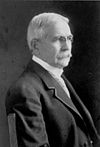
Robert J. Gamble | Republican | March 4, 1901 –
March 3, 1913 | Elected January 22, 1901. [3] | 3 | 57th | Republican |
|---|
| | July 1, 1901 –
July 11, 1901 | Vacant |
Appointed to continue Kyle's term.
Elected January 20, 1903 to finish Kyle's term. [4] | July 11, 1901 –
March 3, 1909 | Republican | 
Alfred Kittredge | 3 |
|---|
| 58th | 4 | Elected to a full term January 21, 1903. [5]
Lost renomination. |
| 59th |
Re-elected January 22, 1907.
Lost renomination. | 4 | 60th |
| 61st | 5 | Elected January 19, 1909.
Lost renomination. | March 4, 1909 –
March 3, 1915 | Republican | 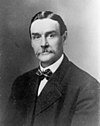
Coe I. Crawford | 4 |
|---|
| 62nd |
| 3 | 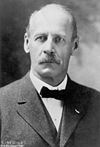
Thomas Sterling | Republican | March 4, 1913 –
March 3, 1925 | Elected January 22, 1913. | 5 | 63rd |
|---|
| 64th | 6 | Elected in 1914.
Retired. | March 4, 1915 –
March 3, 1921 | Democratic | 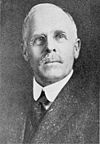
Edwin S. Johnson | 5 |
|---|
| 65th |
Re-elected in 1918.
Lost renomination. | 6 | 66th |
| 67th | 7 | Elected in 1920. | March 4, 1921 –
December 20, 1936 | Republican | 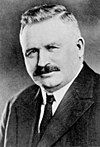
Peter Norbeck | 6 |
|---|
| 68th |
| 4 | 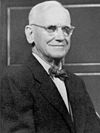
William McMaster | Republican | March 4, 1925 –
March 3, 1931 | Elected in 1924.
Lost re-election. | 7 | 69th |
|---|
| 70th | 8 | Re-elected in 1926. |
| 71st |
| 5 | 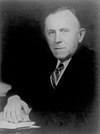
William J. Bulow | Democratic | March 4, 1931 –
January 3, 1943 | Elected in 1930. | 8 | 72nd |
|---|
| 73rd | 9 | Re-elected in 1932.
Died. |
| 74th |
| | December 20, 1936 –
December 29, 1936 | Vacant |
Appointed to continue Norbeck's term.
Lost election to finish Norbeck's term. | December 29, 1936 –
November 8, 1938 | Democratic | 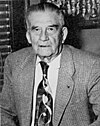
Herbert Hitchcock | 7 |
|---|
Re-elected in 1936.
Lost renomination. | 9 | 75th |
Elected to finish Norbeck's term.
Retired. | November 9, 1938 –
January 3, 1939 | Republican | 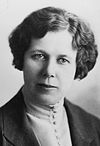
Gladys Pyle | 8 |
|---|
| 76th | 10 | Elected in 1938. | January 3, 1939 –
January 3, 1951 | Republican | 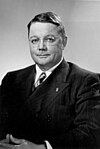
John Gurney | 9 |
|---|
| 77th |
| 6 | 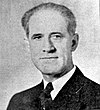
Harlan Bushfield | Republican | January 3, 1943 –
September 27, 1948 | Elected in 1942.
Died. | 10 | 78th |
|---|
| 79th | 11 | Re-elected in 1944.
Lost renomination. |
| 80th |
| Vacant | September 27, 1948 –
October 6, 1948 |
| 7 | 
Vera Bushfield | Republican | October 6, 1948 –
December 26, 1948 | Appointed to finish her husband's term.
Resigned when successor appointed. |
|---|
| Vacant | December 26, 1948 –
December 31, 1948 |
| 8 | 
Karl E. Mundt | Republican | December 31, 1948 –
January 3, 1973 | Appointed to finish Bushfield's term, having been elected to the next term. |
|---|
| Elected in 1948 | 11 | 81st |
| 82nd | 12 | Elected in 1950. | January 3, 1951 –
June 22, 1962 | Republican | 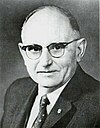
Francis H. Case | 10 |
|---|
| 83rd |
| Re-elected in 1954. | 12 | 84th |
| 85th | 13 | Re-elected in 1956.
Died. |
| 86th |
| Re-elected in 1960. | 13 | 87th |
| | June 22, 1962 –
July 9, 1962 | Vacant |
Appointed to finish Case's term.
Lost election to full term. | July 9, 1962 –
January 3, 1963 | Republican | 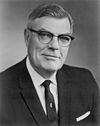
Joseph H. Bottum | 11 |
|---|
| 88th | 14 | Elected in 1962. | January 3, 1963 –
January 3, 1981 | Democratic | 
George McGovern | 12 |
|---|
| 89th |
Re-elected in 1966.
Retired. | 14 | 90th |
| 91st | 15 | Re-elected in 1968. |
| 92nd |
| 9 | 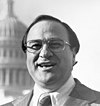
James Abourezk | Democratic | January 3, 1973 –
January 3, 1979 | Elected in 1972.
Retired. | 15 | 93rd |
|---|
| 94th | 16 | Re-elected in 1974.
Lost re-election. |
| 95th |
| 10 | 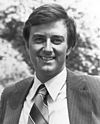
Larry Pressler | Republican | January 3, 1979 –
January 3, 1997 | Elected in 1978. | 16 | 96th |
|---|
| 97th | 17 | Elected in 1980.
Lost re-election. | January 3, 1981 –
January 3, 1987 | Republican | 
James Abdnor | 13 |
|---|
| 98th |
| Re-elected in 1984. | 17 | 99th |
| 100th | 18 | Elected in 1986. | January 3, 1987 –
January 3, 2005 | Democratic | 
Tom Daschle | 14 |
|---|
| 101st |
Re-elected in 1990.
Lost re-election. | 18 | 102nd |
| 103rd | 19 | Re-elected in 1992. |
| 104th |
| 11 | 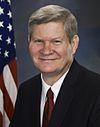
Tim Johnson | Democratic | January 3, 1997 –
January 3, 2015 | Elected in 1996. | 19 | 105th |
|---|
| 106th | 20 | Re-elected in 1998.
Lost re-election. |
| 107th |
| Re-elected in 2002. | 20 | 108th |
| 109th | 21 | Elected in 2004. | January 3, 2005 –
Present | Republican | 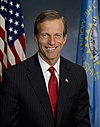
John Thune | 15 |
|---|
| 110th |
Re-elected in 2008.
Retired. | 21 | 111th |
| 112th | 22 | Re-elected in 2010. |
| 113th |
| 12 | 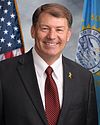
Mike Rounds | Republican | January 3, 2015 –
Present | Elected in 2014. | 22 | 114th |
|---|
| 115th | 39 | Re-elected in 2016. |
| 116th |
| To be determined in the 2020 election. | 23 | 117th |
| 118th | 24 | To be determined in the 2022 election. |
| # | Senator | Party | Years in office | Electoral history | T
e
r
m | | T
e
r
m | Electoral history | Years in office | Party | Senator | # |
|---|
| Class 2 | Class 3 |
|---|



